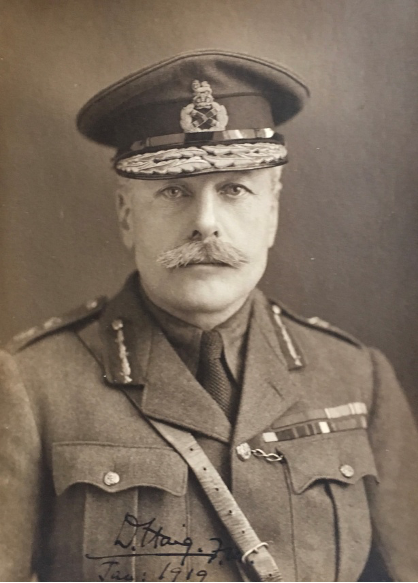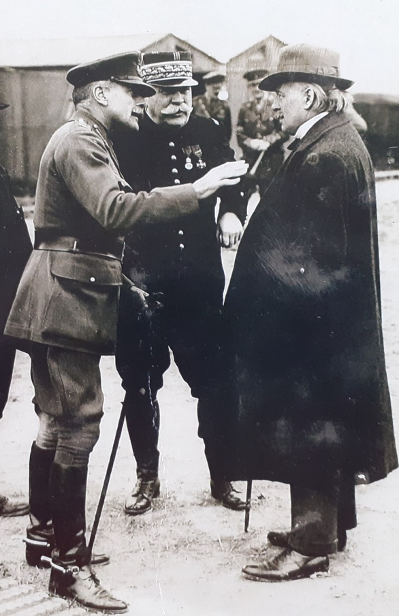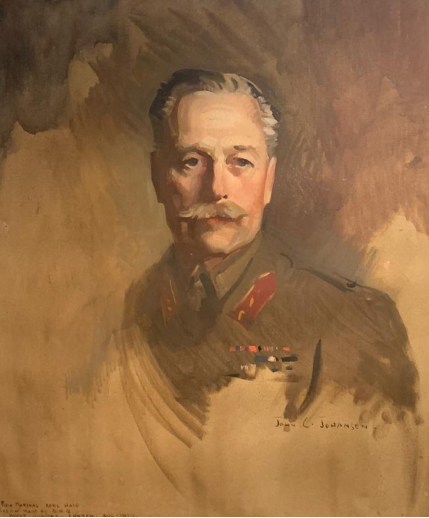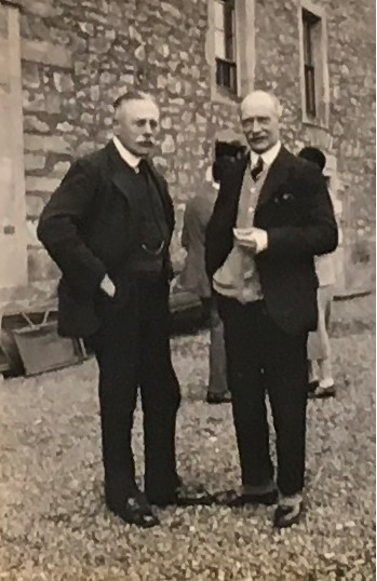Douglas Haig was born in Edinburgh on 19th June, 1861. The son of John Haig, who ran the family’s successful whisky distillery, he was educated at Clifton College, Bristol, and Brasenose College, Oxford, before joining the Army. He attended the Royal Military College at Sandhurst in 1884. As a professional soldier he most famously commanded the British forces in France and Belgium during the latter half of WWI.
Haig was commissioned into the 7th (Queen’s Own) Hussars in 1885, and was promoted rapidly to Lieutenant, then to Captain in 1891. He served with his regiment in India in 1887, and first saw active service under Lord Kitchener in the Sudan in 1898. Haig served in a number of positions during the Boer War, including as Chief Staff Officer to Major-General John French and as Assistant Adjutant General of the Cavalry Division.

Haig returned to England to take up posts as Director of Military Training in 1906 and as Director of Staff Duties in 1907. During this time he helped restructure the Army with the intention of changing its emphasis away from colonial wars and more towards the European war that was now looking increasingly likely. Further advancement swiftly followed, with his appointment as Chief of the General Staff in India in 1909; a promotion to Lieutenant-General in 1910; appointment as General Officer Commanding the Aldershot region from 1912 to 1914; and then becoming Aide-de-Camp to King George V.
At the outbreak of World War One, Haig commanded I Corps, half of the British Expeditionary Force (BEF), under the overall command of Field Marshal John French.

[Photo: Alamy]
Under Haig’s command the BEF embarked on a number of major campaigns, including the British offensive on the Somme and the 3rd Battle of Ypres.
Haig was promoted to Field Marshal in 1917. In 1918, the Germans launched their final assault of the war, the Ludendorff Offensive: it proved disastrous for them. Between 18th July1918 and the end of the war, the French, American and Belgian armies between them captured 196,700 German prisoners and 3,775 guns; Haig’s forces, with less manpower than the French, captured 188,700 prisoners and 2,840 guns.

After the war, Haig was created Earl Haig and awarded the huge (for those days) sum of £100,000 by a grateful nation. He retired from the Army in 1920 and went on to establish the Haig Fund for the financial assistance of ex-servicemen. He also helped set up the Royal British Legion, and was President of the United Services Fund. He died on 29th January, 1928 at the age of 66 and, after a state funeral attended by over a million people, he was buried at Dryburgh Abbey in Scotland.
In essence, Haig was much more than Commander-in-Chief of the British Army, a position he held for 35 of the 51 months’ duration of the First World War; he was also a resolute seeker of solutions through diplomacy and negotiation. Under his mandate, Montreuil became the military, diplomatic and logistical nerve centre of Britain and its Empire for the conduct of the war on the Western Front.
Haig was above all a unifier and, in the wake of this catastrophic war which had such far-reaching consequences, he turned his efforts to the rehabilitation of ex-servicemen, physically and mentally scarred, who found themselves out of work and on the margins of society.
He dedicated himself to relieving the suffering of the widows and families of those who never returned from France. Thanks to the loyalty and respect he inspired in his soldiers, he persuaded the diverse veteran groups, in very unsettled times, to come together to form the Royal British Legion which celebrates its Centenary in 2021. No other military figure of his seniority had taken such an initiative before.

Field Marshal Sir Douglas Haig – The Freemason
As an undergraduate at Oxford, Douglas Haig joined the local Lodge at Leven in Fife near to their Cameron Bridge distillery. He was admitted as an Entered Apprentice into Elgin’s Lodge at Leven No. 91, so named after the fifth Earl, who was Grand Master Mason of Scotland in 1761. He took his First and Second Degrees whilst still at Oxford but left awaiting his Third.
In 1920, Lord Haig visited The Earl of Elgin, the Past Grand Master Mason of Scotland, at Broomhall whilst visiting a club of ex-servicemen that had been developed in the local town of Dunfermline. During the visit, the Earl of Elgin discovered that the Field Marshal was a member of Elgin’s Lodge and learnt that he was interested in continuing his Masonic career.
A suitable date was arranged for Field Marshal the Earl Haig, K.T., to receive his Third Degree and he later went on to become Master of Elgin’s Lodge at Leven No. 91 in 1925.
In June 1921, Bro Field Marshal, The Earl Haig, gave permission for a new lodge to be named Lodge Earl Haig No 1260. The following month the newly consecrated Lodge received a sword as a gift from Earl Haig for use by the Lodge in its ceremonies. The 1st Cavalry Sword that his Lordship donated is still in use by the Lodge to this day.
He was persuaded to take office in Grand Lodge of Scotland.He was Installed as Junior Grand Deacon on 3 December 1924 and as Senior Grand Deacon on 30 November 1925 and was last present in Grand Lodge on 4 May 1927.

